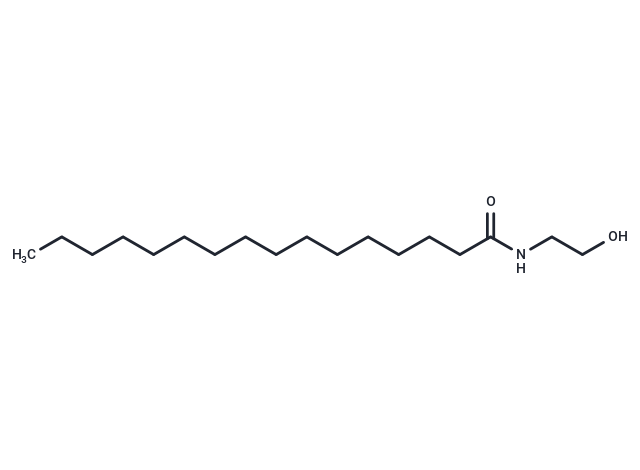Shopping Cart
- Remove All
 Your shopping cart is currently empty
Your shopping cart is currently empty

Palmitoylethanolamide (Impulsin) is an endogenously fatty acid amide. It has a role as an anti-inflammatory drug, an antihypertensive agent, a neuroprotective agent and an anticonvulsant.Upon administration, palmitoylethanolamide may inhibit the release of pro-inflammatory mediators from activated mast cells.

| Pack Size | Price | Availability | Quantity |
|---|---|---|---|
| 10 mg | $43 | In Stock | |
| 25 mg | $65 | In Stock | |
| 50 mg | $89 | In Stock | |
| 100 mg | $162 | In Stock | |
| 200 mg | $233 | In Stock | |
| 500 mg | $389 | In Stock |
| Description | Palmitoylethanolamide (Impulsin) is an endogenously fatty acid amide. It has a role as an anti-inflammatory drug, an antihypertensive agent, a neuroprotective agent and an anticonvulsant.Upon administration, palmitoylethanolamide may inhibit the release of pro-inflammatory mediators from activated mast cells. |
| Targets&IC50 | PPARα:3.1±0.4 μM(EC50) |
| Alias | Palmidrol, N-palmitoylethanolamine, Mackpeart DR 14V, Loramine P 256, Impulsin, AM 3112 |
| Molecular Weight | 299.49 |
| Formula | C18H37NO2 |
| Cas No. | 544-31-0 |
| Smiles | C(CCCCCCCCCCCCC)CC(NCCO)=O |
| Relative Density. | 0.91 g/cm3 |
| Storage | store at low temperature | Powder: -20°C for 3 years | In solvent: -80°C for 1 year | Shipping with blue ice. | ||||||||||||||||||||||||||||||
| Solubility Information | DMSO: 1.27 mg/mL (4.24 mM), Sonication is recommended. Ethanol: 7.5 mg/mL (25 mM) | ||||||||||||||||||||||||||||||
Solution Preparation Table | |||||||||||||||||||||||||||||||
DMSO/Ethanol
Ethanol
| |||||||||||||||||||||||||||||||

Copyright © 2015-2024 TargetMol Chemicals Inc. All Rights Reserved.